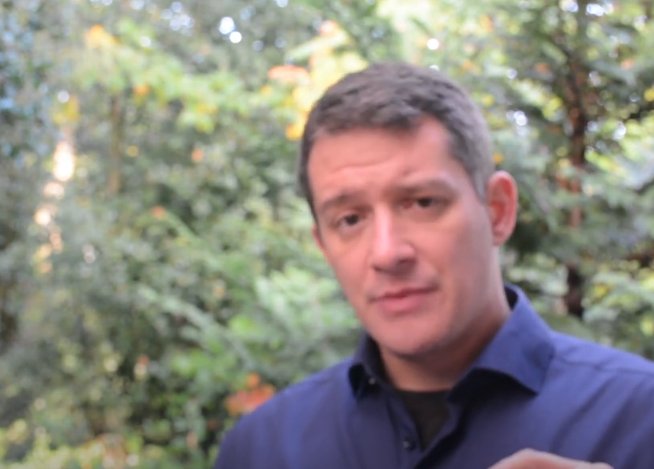One of the main criticisms often directed at Dr. Hamer's formulations is the perception that illnesses considered dangerous in conventional medicine are seemingly described by Dr. Hamer as "meaningful."
To shed some light on this discrepancy, I would like to examine the factor of time—specifically, how long a physical process persists—in this context.
To summarize: In the fifth biological law of nature—which, due to its formulation, is not actually a natural law or constant in the strictest sense but rather a philosophical, teleological summary of the observations made in the first four biological laws—Hamer describes the "understanding of every so-called illness as part of an evolutionarily comprehensible, meaningful biological special program."
This is, at best, a source of misunderstanding. First, one might object to the phrase "every so-called illness." Even from the perspective of the five biological laws, poisonings, injuries, radiation damage, and deficiencies are not "special programs" in themselves. In many cases, the body attempts to counter these phenomena with the help of special programs, but the trigger itself is external.
Secondly, attention should be drawn to the phrase "evolutionarily comprehensible," which, unfortunately, was not further elaborated upon.
What Hamer likely means is that these "special programs" were designed, so to speak, as useful during a time when the human species was still in development. However, this evolutionary period is long past, and the conditions of modern life are often far from "natural."
To illustrate the significance of this difference, let us examine the triggering "conflict content," the "biological purpose," and the organic progression of a frequently cited example of a special program: adenocarcinoma of the breast (glandular breast cancer).
According to Hamer's taxonomy, this special program is activated by a "worry-conflict," also referred to as a "nest conflict," and is intended to help an injured or sick family member ("nest" representing an intimate relationship) by enabling the breast gland to grow and provide assistance.
In his first book, Dr. Hamer estimated that a glandular breast tumor must grow for 4–6 weeks before it becomes palpable.
Since the breast gland belongs to the older part of the mesoderm, its growth process—according to the third biological law—occurs during the conflict-active phase, meaning while the triggering "worry-conflict" is still present and acute. During this phase, the gland grows primarily through cell division, i.e., mitosis, without significant inflammation. The mitotic cell division leads to doubling, so the number of cells—and thus the tumor size—doubles with each division step.
If we assume that a glandular tumor requires about 6 weeks to reach a diameter of 5mm, it would need approximately 12 weeks for 1cm, 24 weeks for 2cm, and so on—provided that the cell division rate remains constant without acceleration or deceleration due to changes in the triggering factor.
This raises the question: How did nature intend this process to work? This inevitably leads us to consider how long such a conflict would persist in a "natural" scenario. The answer is as logical as it is clear: very briefly.
For example, if a fox mother is caring for her injured cub and the mammary gland (milk line) special program is activated in this context, it quickly becomes evident that such a "care phase" cannot extend over weeks or months.
No matter how severe the cub's injury, the outcome—whether recovery or death—would be decided within days. In either case, the "worry-conflict" would be resolved.
From this perspective, many "special programs" can be more clearly understood. In the case of a starvation conflict (liver parenchyma), the logical duration aligns with the question of how long a human can survive without solid food—4 to 6 weeks. For a "refugee conflict," leading to water retention and intended to enable survival outside a familiar environment—i.e., without fresh water—the "natural time" is 4 to 5 days. Beyond this, a person would die of dehydration.
It is now evident that in 4–6 weeks, neither a noticeable liver tumor grows (through mitosis), nor does significant weight gain occur due to water retention in 4–5 days—the factor of time is critical.
In summary, it might be said that most processes we call "illness" arise from special programs originally intended to be useful but occur only because the duration of the triggering conflict far exceeds the natural timeframe.
To claim that an illness is "meaningful" is, therefore, incorrect. What we call "illness" only manifests when the responsible "special program" fails to contribute to a timely resolution of the triggering situation.
From Our Blog

17. August 2025
How a DHS can turn chronic
A brief explanation of how biological conflicts can enter a recurring cycle and appear like a cronic disease.

14. August 2025
The three types of being sick
There is three ways of being sick and they are very different.

23. July 2025
Invisible Doors – Why Weak Passwords Don’t Really Protect You
How Secure Is Your Digital Life? Most people use weak passwords – and often reuse them. This article explains why that’s risky, how you can protect yourself, and what 2FA actually does. 👉 Plus: a 30-day challenge to boost your security step by step.

05. January 2025
The biological meaning in the context of time
"Explore Dr. Hamer's theories on illnesses as evolutionary 'special programs,' highlighting the role of conflict duration, natural timelines, and the biological significance of disease processes."

04. January 2025
Presentation at the Open Day, Bergamo 2019
On January 26, 2019, during the Open Day of the Academy for the 5 Biological Laws in Bergamo, Italy, a lecturer showcased the academy's teaching methods. Using a small experiment, they demonstrated how effective learning strategies can help grasp unfamiliar concepts quickly, highlighting the academy’s innovative approach to making complex topics accessible.

22. October 2019
Nutrition and the 5 laws of nature
The text explores the connection between the 5 Biological Laws (5BN) and nutrition, emphasizing how active "special programs" can influence biochemical needs and create specific demands for certain nutrients like protein, salt, or calcium. It highlights that deficiencies or disruptions in nutrient processing can stall healing processes, which may be resolved through dietary adjustments or supplements. The core idea is that physical, psychological, and biochemical levels are interconnected, and interventions on any level can impact the overall process.